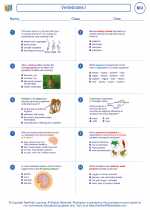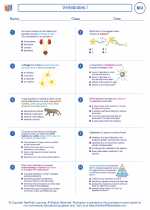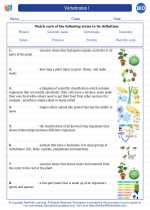Pollen: Structure, Formation, and Function
Structure of Pollen
Pollen is a fine to coarse powdery substance comprising pollen grains, which are the male microgametophytes of seed plants. Each pollen grain typically consists of a protective outer layer called the exine, and a single-celled male gametophyte inside, containing the generative cell and the tube cell. The exine is composed of sporopollenin, a resilient biopolymer that protects the genetic material within the pollen grain from environmental damage.
Formation of Pollen
Pollen is formed within the anthers of the flower's stamen. The process of pollen formation, or microsporogenesis, begins with the development of microspore mother cells within the anther. These mother cells undergo meiosis to produce haploid microspores, which then develop into mature pollen grains through a process known as microgametogenesis.
Function of Pollen
The primary function of pollen is to facilitate the transfer of male gametes (sperm cells) from the anther of one flower to the stigma of another, ultimately leading to fertilization. This process, called pollination, can occur through various mechanisms, including wind, water, insects, birds, and other animals, depending on the plant species. The unique morphology of pollen grains, often characterized by specific surface features and ornamentation, plays a crucial role in the adaptation of plants to their respective pollination vectors.
Study Guide
Key Concepts
- Structure and composition of pollen
- Formation of pollen grains
- Function of pollen in plant reproduction
- Mechanisms of pollination
Study Tips
- Review the process of microsporogenesis and microgametogenesis to understand the formation of pollen grains.
- Examine the intricate structure of pollen grains under a microscope to identify key features of the exine and internal cell components.
- Explore the diverse strategies employed by plants for pollination, including co-evolution with pollinators and adaptations for wind dispersal.
- Consider the ecological and evolutionary significance of pollen as a crucial element in the reproductive success of flowering plants.
Practice Questions
- Describe the structural components of a typical pollen grain and their functions.
- Explain the process of pollen formation within the anthers of flowering plants.
- Discuss the role of pollen in the pollination process and its significance for plant reproduction.
- Compare and contrast different modes of pollination and their implications for plant diversity.
◂Biology Worksheets and Study Guides High School. Vertebrates I

 Worksheet/Answer key
Worksheet/Answer key
 Worksheet/Answer key
Worksheet/Answer key
 Vocabulary/Answer key
Vocabulary/Answer key
 Vocabulary/Answer key
Vocabulary/Answer key
 Vocabulary/Answer key
Vocabulary/Answer key
